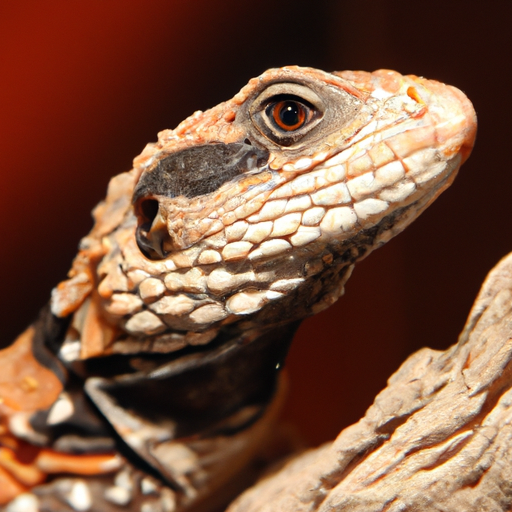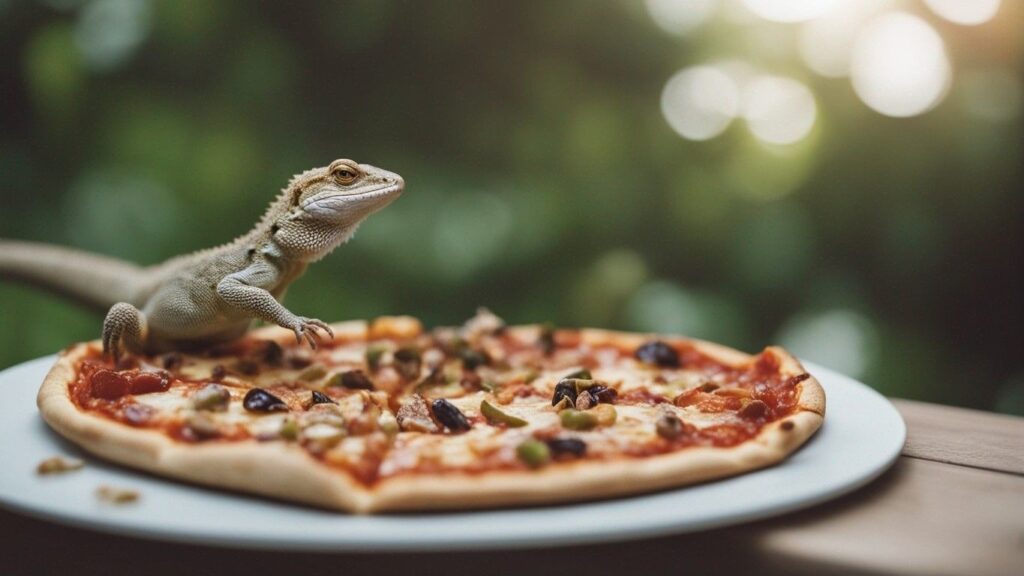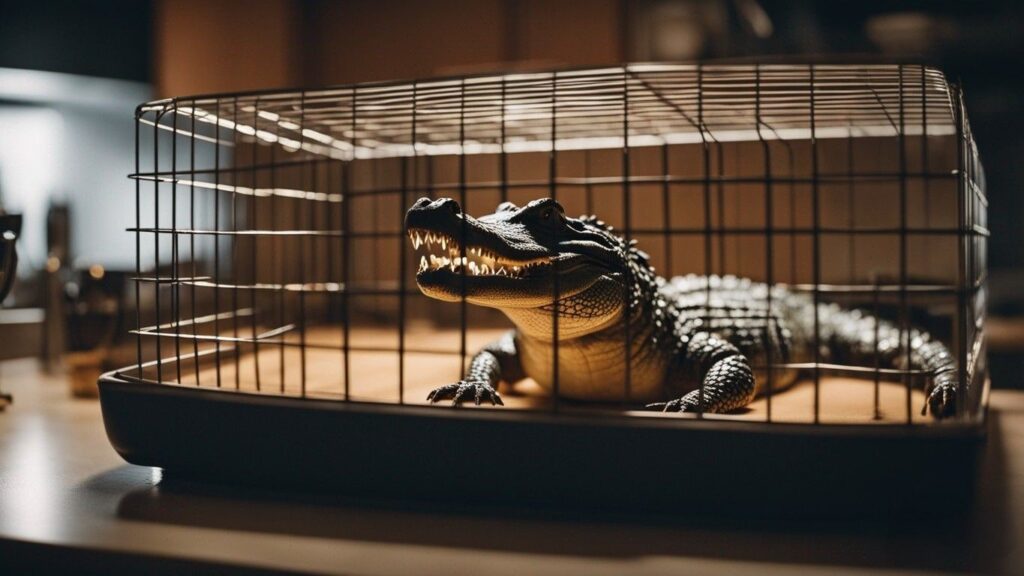So you’re considering getting a pet and you’re wondering if lizards make good companions. Well, you’ve come to the right place!
In this article, we’ll explore the pros and cons of owning a lizard as a pet. From their low maintenance needs to their unique characteristics, we’ll help you decide if a lizard is the perfect addition to your household.
Whether you’re a reptile enthusiast or simply curious about these scaly creatures, let’s find out if lizards are indeed good pets!
Benefits of Having Lizards as Pets
If you’re considering getting a pet, you may want to think outside of the box and consider a lizard. Lizards make great pets for a variety of reasons, and here we’ll explore some of the key benefits.
Low Maintenance
One of the biggest advantages of having a lizard as a pet is their low maintenance. Unlike high-energy dogs or cats that require daily walks and entertainment, lizards are content to spend a majority of their time basking in the warmth of their habitat. This means less time and effort required on your part to keep them happy and healthy.
Quiet and Calm
If you’re not a fan of noisy or chaotic environments, a lizard may be the perfect pet for you. Lizards are generally quiet creatures that don’t vocalize like dogs or cats. With their calm and serene nature, they can create a peaceful atmosphere in your home, allowing you to relax and unwind after a long day.
Long Lifespan
Another advantage of having a lizard as a pet is their long lifespan. Unlike some pet species that may only live a few years, many lizard species can live for decades with proper care. This offers you the opportunity to develop a long-lasting bond and companionship that can bring joy and companionship for many years to come.
Fascinating to Observe
Lizards are full of fascinating behaviors and unique physical adaptations that make them a delight to observe. From their incredible camouflage abilities to their interesting hunting techniques, watching a lizard in action can be both educational and entertaining. Their social interactions with other lizards can also provide valuable insights into their behavior and communication.
Variety of Species
One of the great things about lizards as pets is the vast variety of species to choose from. With numerous different sizes, appearances, and care requirements, there is a lizard out there to suit every owner’s preferences. Whether you prefer a small gecko or a larger bearded dragon, you’ll have the opportunity to select a lizard that fits your lifestyle and interests.
Considerations Before Getting a Pet Lizard
While there are numerous benefits to having a lizard as a pet, it’s important to consider a few key factors before making your decision. These considerations will ensure that you are fully prepared to provide the best possible care for your new scaly friend.
Space Requirements
Lizards, like all pets, require adequate space to thrive. Different species have different space requirements, so it’s essential to research the specific needs of the lizard you’re interested in. This will include considerations such as the size of the enclosure, the type of substrates required, and the need for various cage furnishings and hiding spots.
Habitat Setup
Creating a suitable habitat for your lizard is crucial for their overall health and well-being. Factors such as temperature gradient, humidity control, substrate selection, and decorations should all be carefully considered. Providing an environment that closely replicates their natural habitat will help ensure that your lizard feels secure and comfortable in their new home.
Temperature and Lighting
Lizards are ectothermic creatures, which means they rely on external heat sources to regulate their body temperature. It’s important to understand the specific temperature and lighting requirements of your chosen lizard species to ensure they can properly thermoregulate. Providing an appropriate heating source and UVB lighting is essential for their overall health and digestion.
Feeding and Nutrition
Another consideration before getting a pet lizard is their feeding and nutritional needs. Different species have different dietary requirements, so it’s essential to educate yourself on the specific foods your lizard needs to thrive. Some lizards will require live insects, while others may eat a combination of insects, fruits, and vegetables. Proper nutrition is key to maintaining their overall health and preventing any potential deficiencies.
Handling and Interaction
While lizards can be fascinating to observe, it’s important to note that they generally don’t require frequent handling or interaction like some other pets. Lizards are not domesticated animals and can become stressed or injured if mishandled. It’s essential to understand the minimal handling requirements for your specific species and always prioritize their safety and well-being.
Low Maintenance of Lizards
One of the appealing aspects of having lizards as pets is their low maintenance requirements. This makes them a great choice for busy individuals or those who prefer a more hands-off approach to pet ownership.
Minimal Grooming Needs
Unlike dogs or cats that may require regular grooming sessions, lizards have minimal grooming needs. They have self-cleaning scales and don’t require baths or brushing. Occasional shedding is a natural process for lizards, and they will usually take care of it themselves.
Infrequent Feeding
Lizards have slower metabolisms compared to mammals, which means they don’t need to be fed as frequently. Depending on the species, most lizards only need to be fed every few days or even once a week. This makes it easier to plan and manage their feeding schedule, especially for busy individuals or families with demanding routines.
No Need for Walking or Exercise
Unlike dogs or even some small mammal pets, lizards don’t require daily walks or specific exercise routines. They are content to spend their time basking, exploring their enclosure, or simply resting. This makes them a great option for individuals living in apartments or those with limited mobility.
Quiet and Calm Nature of Lizards
If you’re someone who values a quiet and calm environment, a lizard is an ideal pet choice. Their serene nature can provide a peaceful atmosphere within your home.
Lack of Vocalization
One of the advantages of having a pet lizard is their lack of vocalization. Unlike dogs or cats that can bark or meow, lizards are generally silent creatures. This means no midnight barking sessions or disruptive noise during the day, allowing you to enjoy a more tranquil living environment.
Non-Disruptive Behavior
Lizards are generally low-key and non-disruptive pets. They don’t require constant attention or entertainment, making it easier to go about your daily activities without constant interruptions. Their calm and self-sufficient nature allows them to adapt well to a variety of living situations and schedules.
Relaxing Presence
The presence of a lizard can provide a calming and relaxing effect on its owners. Their slow movements and tranquil demeanor can have a soothing effect, helping to reduce stress and anxiety. Observing their serene behavior can provide a sense of peace and tranquility, making them excellent companions for individuals seeking a more relaxed lifestyle.
Long Lifespan of Lizards
One of the significant advantages of having a lizard as a pet is their potential for a long lifespan. This allows for years of companionship and the opportunity for a strong bond to develop.
Potential for Decades of Companionship
While the exact lifespan of a lizard can vary depending on the species and individual care, many popular pet lizard species have the potential to live for several decades. This extended lifespan means that you can expect to have your lizard as a companion for a significant portion of your life, forming a deep and lasting bond.
A Sense of Continuity
The long lifespan of lizards can provide a sense of continuity and stability in your life. While humans may experience various life changes and transitions, having a long-lived pet like a lizard can provide a constant presence and source of comfort. They can be a steady and reliable companion throughout different stages of your life.
Opportunity for Bonding
The years of companionship offered by lizards provide ample opportunity to form a strong bond with your pet. Lizards can learn to recognize their owners and may even show signs of excitement when you approach their enclosure. Bonding with your lizard can be a rewarding experience, deepening the connection and fostering a strong relationship based on trust and mutual understanding.
Fascinating to Observe
Lizards are incredibly intriguing creatures to watch and observe. Their unique physical adaptations and behaviors can provide hours of entertainment and educational experiences.
Unique Physical Adaptations
One of the fascinating aspects of lizards is their diverse range of physical adaptations. From the incredible ability to change color and blend into their surroundings to impressive regenerative abilities, lizards have evolved a multitude of features that make them stand out in the animal kingdom.
Camouflage and Coloration
Many lizard species have the incredible ability to change their color or blend into their environment. This camouflage provides them with protection from predators and allows them to quietly wait for their prey. Observing this transformation in real-time can be a captivating experience.
Interesting Hunting Techniques
Lizards have evolved a variety of hunting techniques that are both efficient and mesmerizing to watch. From the lightning-fast tongue of a chameleon snatching up insects to the stealthy stalking of a gecko, observing lizards in action can give you a new appreciation for their natural hunting abilities.
Social Interactions
For those who choose to keep multiple lizards, observing their social interactions can be fascinating. Many species exhibit complex social behaviors, from establishing territories to engaging in courtship rituals. Witnessing these interactions can provide valuable insights into their natural behavior and add an extra layer of intrigue to their care.
Variety of Lizard Species
One of the great things about having a lizard as a pet is the vast range of species to choose from. This variety ensures that there is a lizard out there to suit every owner’s preferences and lifestyles.
Different Sizes and Appearance
Lizards come in a wide array of sizes and appearances, ranging from small and delicate geckos to larger and more robust species like bearded dragons. Whether you prefer a small, colorful lizard or a more imposing reptile, there is a species out there that will catch your eye and fulfill your preferences.
Diverse Habitats
Lizard species encompass a vast range of habitats, from desert-dwellers to rainforest inhabitants. This diversity allows lizard enthusiasts to create unique and specialized enclosures that mimic the natural environments of their chosen species. Whether you enjoy creating a desert-themed habitat or a lush rainforest, there’s a lizard species to suit your preferences.
Specialized Care Requirements
Each lizard species comes with its own specific care requirements. Some may require higher humidity levels, while others may need a more extensive basking area. This variety in care needs allows reptile enthusiasts to gain specialized knowledge and cater to the unique needs of their chosen lizard species.
Suitable for Different Owner Preferences
Due to the wide range of lizard species available, you’re bound to find one that aligns with your preferences and lifestyle. Whether you want a pet that requires minimal handling or one that thrives on social interaction, there’s a lizard species that matches your desired level of interaction and care commitment.
Space Requirements for Lizards
Proper space is essential for ensuring your pet lizard’s physical and mental well-being. Here are some considerations when it comes to providing adequate living space.
Enclosure Size
The size of the enclosure must be suitable for the specific species of lizard you plan to keep. Larger species may require spacious enclosures to allow for movement and proper thermoregulation, while smaller species may be more accommodating of smaller enclosures. Before bringing a lizard home, research the recommended enclosure size to ensure your pet has ample room to thrive.
Vertical vs. Horizontal Space
Depending on the species, some lizards prefer vertical climbing spaces, while others prefer horizontal areas to roam. Understanding your lizard’s natural behavior and habitat preferences will help you create an enclosure that accommodates their needs. Providing branches, shelves, or rocks to climb on can create vertical space, while larger floor areas can cater to those who prefer ground-based activities.
Cage Furnishings and Hiding Spots
Creating a comfortable and stimulating environment for your lizard includes providing appropriate cage furnishings. Adding items such as artificial plants, rocks, and branches can mimic their natural habitat and offer opportunities for exploration and enrichment. Hiding spots, such as small caves or hollow trunks, are also crucial for lizards to retreat to when they desire privacy or feel threatened.

Habitat Setup for Pet Lizards
Creating a suitable habitat for your pet lizard is vital for their overall health and well-being. Pay attention to these important considerations to create a thriving environment for your scaly friend.
Substrate Selection
Choosing the right substrate for your lizard’s enclosure is essential. Different lizard species have different substrate requirements, ranging from sand to coconut husk fiber. A substrate should provide a comfortable surface for your lizard to walk on, allow for burrowing or digging (if needed), and promote proper humidity levels. Research the specific needs of your lizard’s species to select the most appropriate substrate.
Temperature Gradient
Providing a suitable temperature gradient within the enclosure is crucial to your lizard’s health. Lizards, being ectothermic animals, depend on external heat sources to regulate their body temperature. Create a temperature gradient by placing heat sources, such as heat lamps or heating pads, at one end of the enclosure, and provide a cooler area at the opposite end to allow your lizard to choose the temperature that best suits their needs.
Humidity Control
Many lizard species have specific humidity requirements, and maintaining the right humidity level in the enclosure is crucial to their well-being. This can be achieved through misting, providing a humidity box or hide, or using a reptile-approved humidifier or fogger. Monitoring and adjusting the humidity levels based on your lizard’s needs is essential for their overall health and proper shedding.
Decorations and Plants
Creating a visually appealing habitat for your lizard not only enhances their overall well-being but also provides a more natural and stimulating environment. Adding decorations such as branches, rocks, hides, and artificial plants can mimic their natural habitat and provide opportunities for exploration and enrichment. Just make sure any decorations or live plants are safe and non-toxic for your lizard.
Handling and Interaction with Lizards
While lizards can be fascinating to observe, it’s important to understand their minimal handling requirements and take precautions to ensure their safety and well-being.
Minimal Handling Requirements
Lizards, especially those that are not accustomed to regular handling from a young age, typically do not require frequent handling or interaction. They are not domesticated animals like dogs or cats and may become stressed or even injured if mishandled. Minimize handling to occasional necessary interactions, such as for health checks or enclosure maintenance, to reduce stress on your lizard.
Risk of Injury
Lizards have delicate bodies and bones, and improper handling techniques can result in injury. Never grab a lizard by its tail, as some species can drop their tail as a defense mechanism, which can be stressful and even life-threatening. Support their body properly when holding them, ensuring a gentle and secure grip. Always wash your hands before and after handling your lizard to prevent the transmission of any potential diseases.
Bonding Opportunities
Although lizards may not require frequent handling, there are still opportunities for bonding and interaction. Spending time near the enclosure, talking softly or even reading out loud can help your lizard become accustomed to your presence, as they can recognize and become familiar with your voice and scent. Additionally, providing stimulating enrichment, such as puzzle feeders or supervised exploration time outside the enclosure, can help strengthen your bond.
Final Thoughts
In conclusion, lizards can make wonderful pets for individuals looking for low-maintenance, calm, and fascinating companions.
Their long lifespan provides an opportunity for continuous companionship and bonding. With a variety of species to choose from, each offering unique appearances and care requirements, lizard ownership can cater to different preferences.
However, it’s crucial to consider space requirements, habitat setup, temperature and lighting needs, feeding and nutrition, as well as handling and interaction considerations before bringing a lizard into your home.
By providing the appropriate environment and care, your pet lizard can thrive and bring joy and wonder into your life for many years to come.




